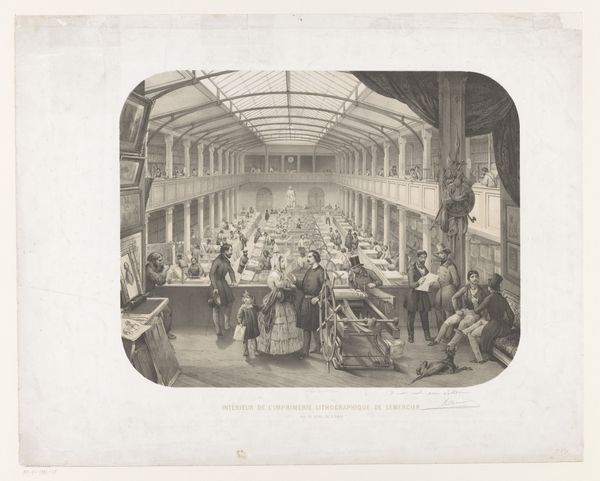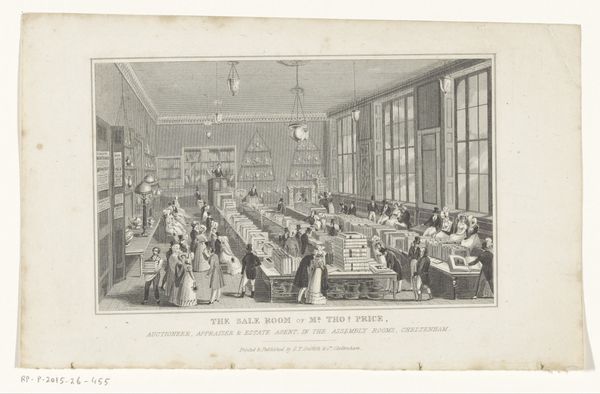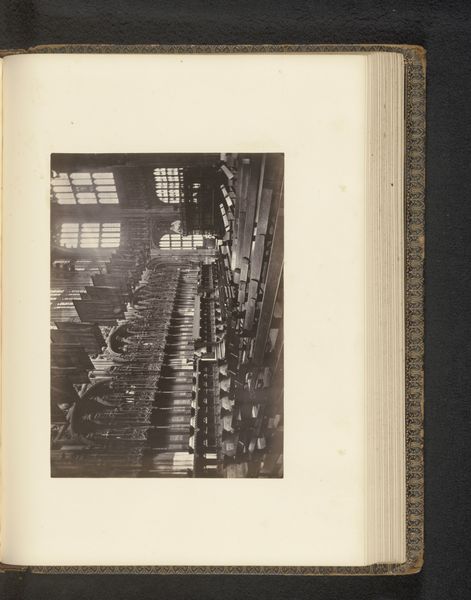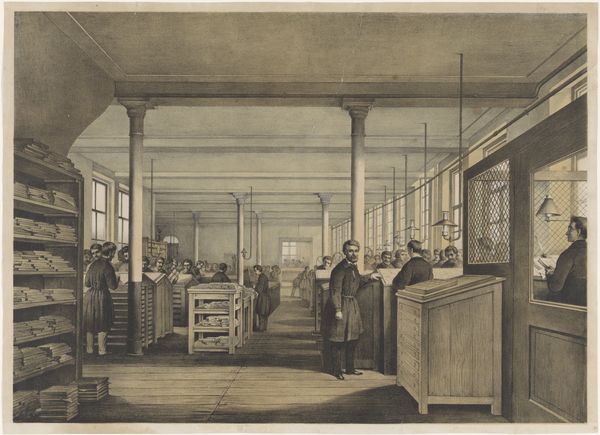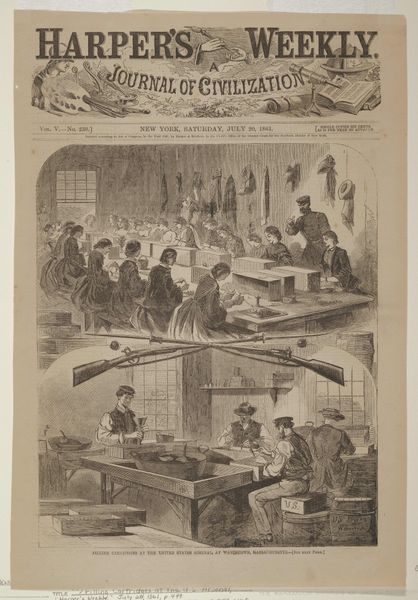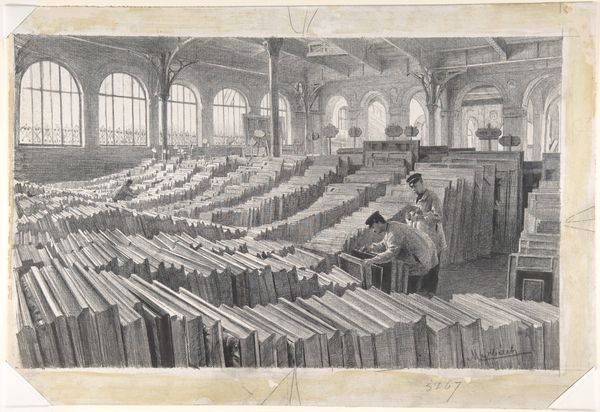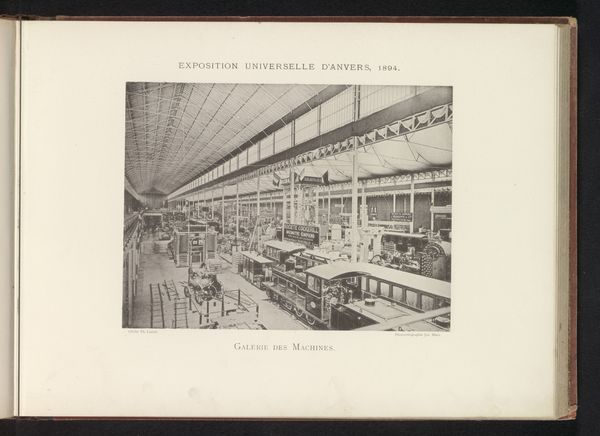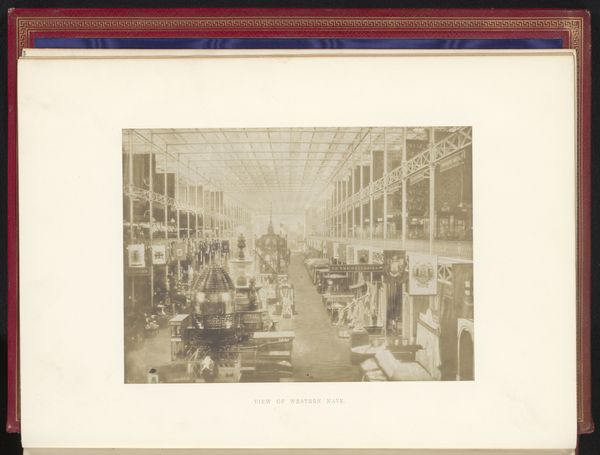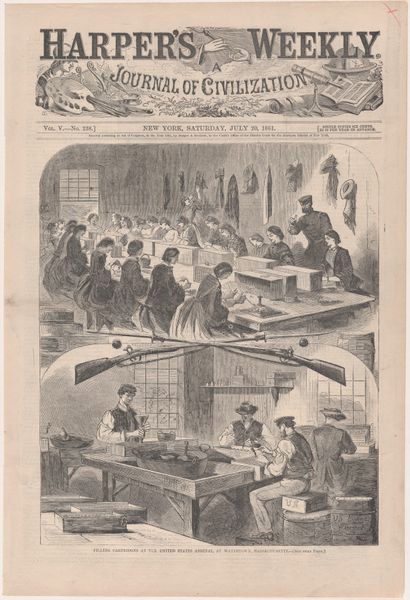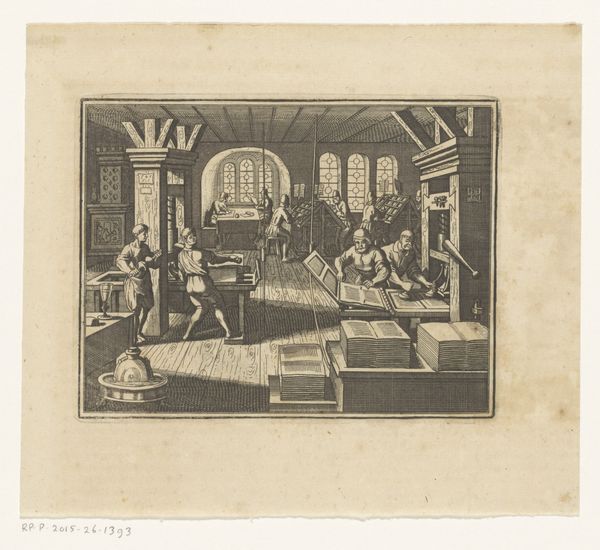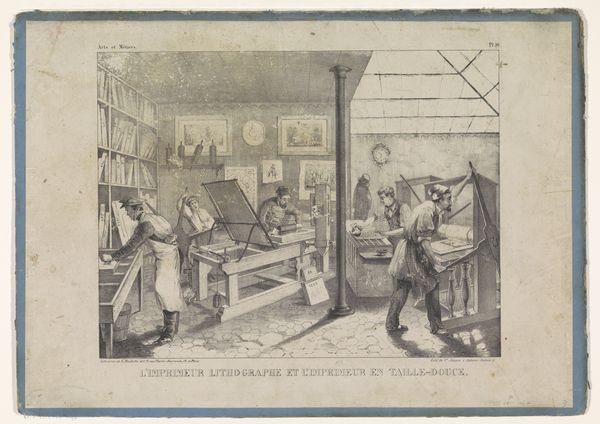
Reproductie van een gravure van mannen aan het werk in een zetterszaal before 1892
0:00
0:00
print, engraving
#
portrait
# print
#
genre-painting
#
engraving
#
realism
Dimensions: height 172 mm, width 250 mm
Copyright: Rijks Museum: Open Domain
Curator: Here we have a print, an engraving dating back to before 1892, titled “Reproductie van een gravure van mannen aan het werk in een zetterszaal” – a reproduction of an engraving showing men working in a typesetting room. It’s attributed to Rimmer van der Meulen. Editor: It's remarkable. The eye is immediately drawn down that long corridor of diligent laborers, meticulously arranging type. There’s a certain melancholic beauty to it, don’t you think? The sheer density of the workforce makes you consider issues around class and labor in the 19th century. Curator: Absolutely. Consider the historical context; printing houses were essential hubs, enabling mass communication. The engraving likely served to showcase the inner workings of such an enterprise, emphasizing order and industriousness to reassure clients, or even attract investors. It presents an image, controlled and deliberate. Editor: It certainly does that. What interests me, though, is to dig deeper, past that carefully managed facade. Those figures—presumably all men given the time, possibly including young boys—were cogs in this massive industrial machine. How much power did these workers truly possess when it came to disseminating information? This touches on control, bias, the flow of communication... Curator: Indeed, we should ask: Who commissioned it and for what purpose? Dissemination to shareholders or some trade exposition, perhaps. The engraver chose this angle and the workers as its subjects. Power lies also in the very representation of labor, whether it is intended to inform or to impress. The very fact that its realism aligns with that prevalent style of the period might tell a story too... Editor: You’re spot-on about the potential to impress. And beyond that, there is a possible story of forced submission and of a rigid socio-political climate governing not just the technology of the time but even creativity. And there’s perhaps another subtle form of bias we could identify: It’s interesting to think about whose story *isn't* told by this image. What’s deliberately left out, for example, maybe because it wasn’t considered "profitable". Curator: Good point. Art doesn't operate in a vacuum. Its power resonates profoundly when we realize it's a lens refracting a particular perspective. Editor: Precisely. What’s considered normal is worth examining, especially as this representation of industrial life gets disseminated over time. Let’s all pause and contemplate the story it's telling… and the stories it intentionally leaves untold.
Comments
No comments
Be the first to comment and join the conversation on the ultimate creative platform.
